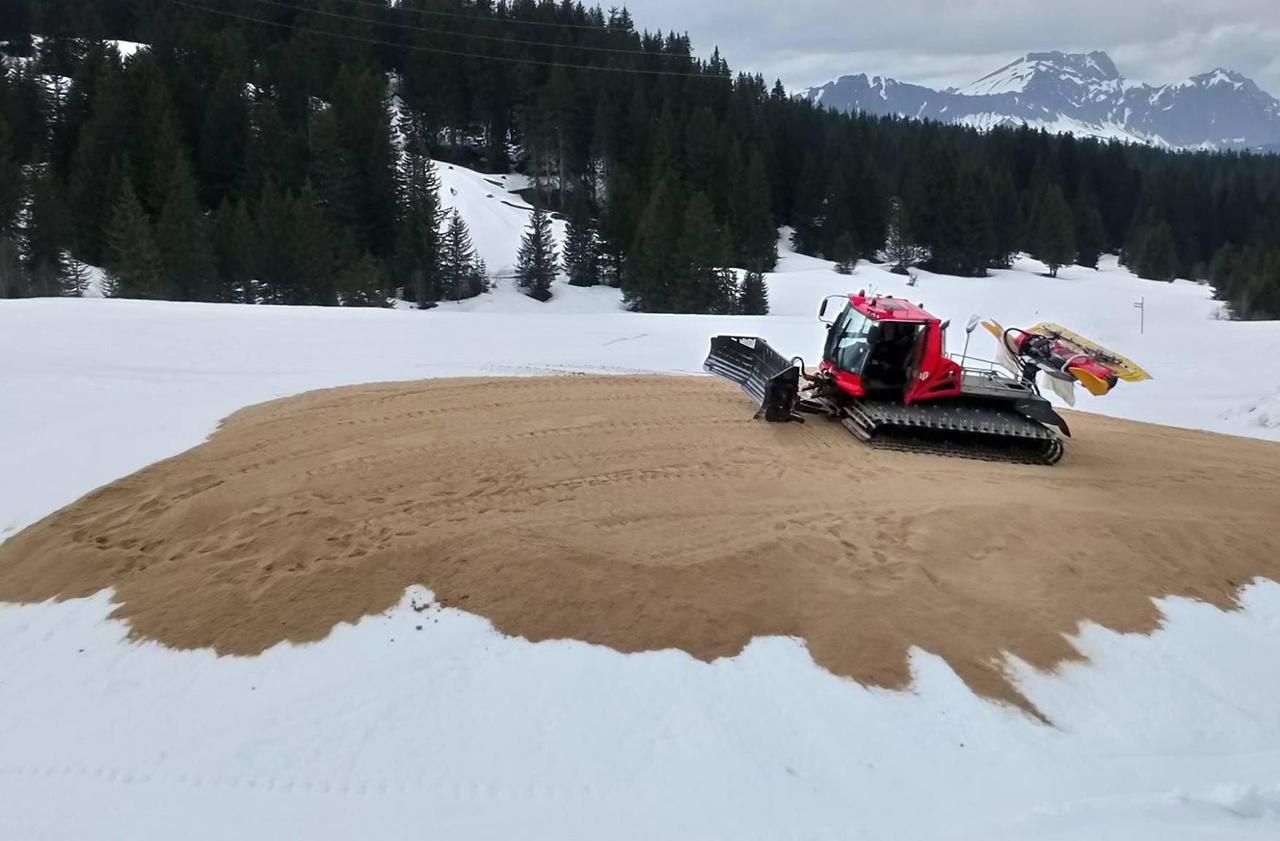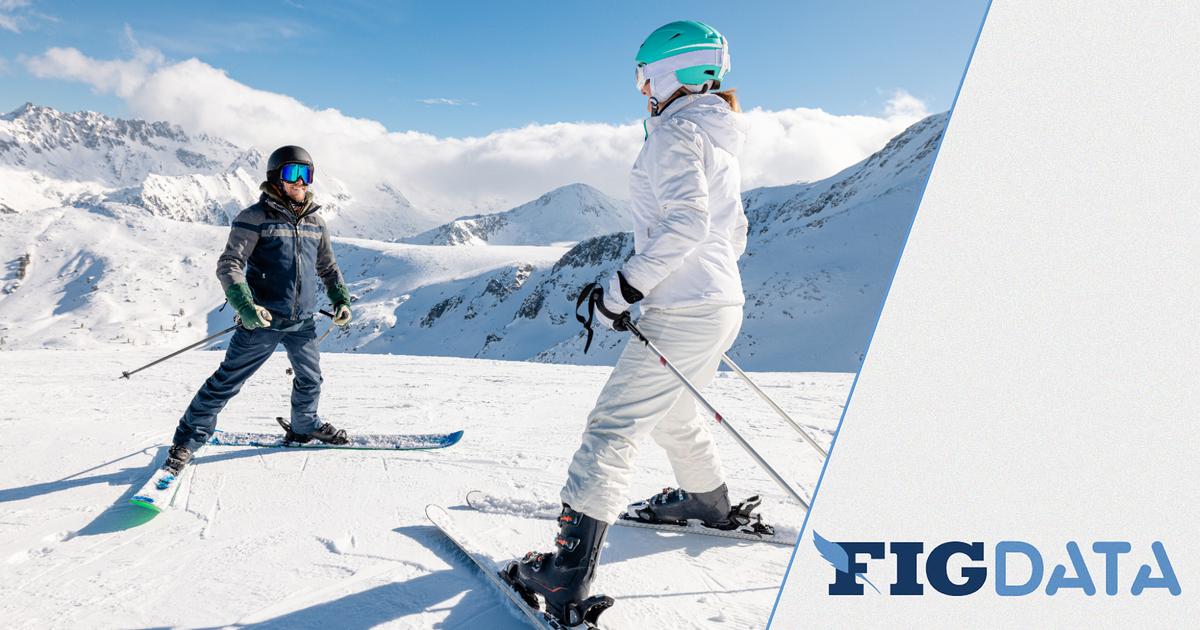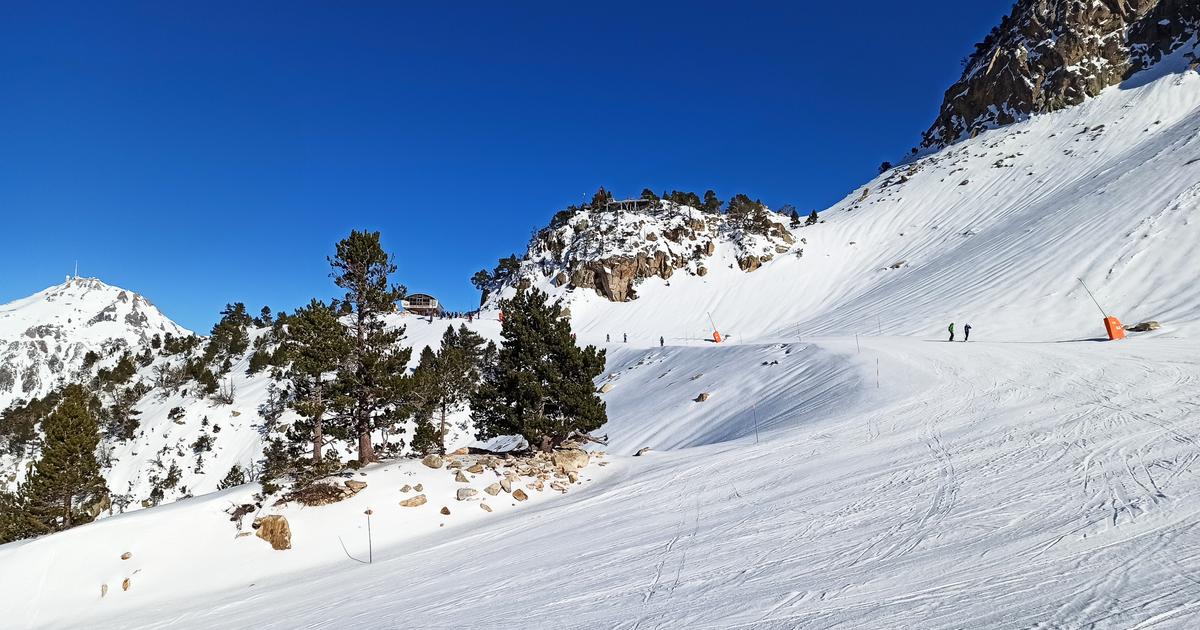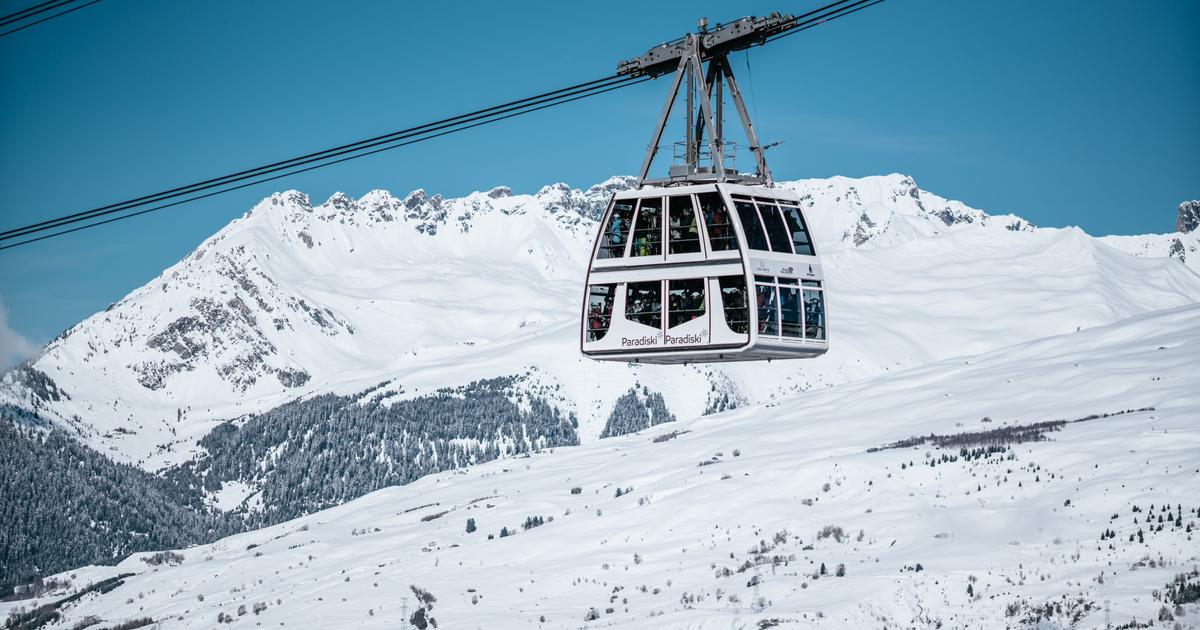In summer, mountain bikers who descend the slopes of the Saisies (Savoie) sometimes wonder at the sight of this curious beige mound. Few know it but under this mass sleeps an enormous quantity… of snow! The technique, called "snowfarming", comes from the Nordic countries and has been used for ten years in the Jura.
"The idea first came to us when the Tour de France passed through the station in 2016," recalls Philippe Clochey, head of piste service. We managed to create an ephemeral track, in the height of summer, with real snow on which we skied while the cyclists passed a few meters away! "
The resort's publicity stunt continued and, for three years now, Les Saisies has kept snow from season to season for its tracks rather than using cannons or helicopters, a practice denounced this Sunday by the Minister of Ecology, Elisabeth Borne. “We keep 8,000 m3 of snow, which we protect with a layer of sawdust,” continues Philippe Clochey. It thus remains sheltered all spring, summer and autumn, losing only 20% of volume. At the start of the winter season, we use it to create up to 2.5 km of trails on our Nordic ski area. "
The trick is just as economical as it is ecological because it avoids having to produce artificial snow, expensive (1.30 euro per m3) and greedy both in electricity and in water, in case of shortage at the very start of the season . Essential for the resort of Les Saisies which hosts, at the beginning of December, official international Nordic skiing competitions.
The experts in the ski area do not stop there. All winter long, the twelve snow groomers at Les Saisies, who take action every evening to give the slopes a new lease of life, are equipped with a high-tech tool. Called Snow Sat, it allows pilots to see on a screen the exact thickness of snow on which the tracks of their machine rest.
My Earth Newsletter
Each week, environmental news seen by Le ParisienI'm registering
Your email address is collected by Le Parisien to allow you to receive our news and commercial offers. Find out more
"Thanks to a very precise cartography carried out by satellite, the system rationalizes the passages of the snow groomers as closely as possible, which results in fuel savings", specifies Philippe Clochey. A technique which earned the Les Saisies team an award at the last Eco-Damage Trophy, a prize which values initiatives to reduce the environmental impact of the use of recreational snow.
In Arêches, we go piano on the barrel
Its small church, whose bell tower dominates the roofs of wooden chalets, some built in the 17th century, immediately sets the tone. In Arêches, a 700-soul village resort in the Northern Alps, 20 km from Albertville (Savoie), the mountain tradition is neither vain nor artificial. Here, skiing is an activity that adapts to natural constraints ... and not vice versa.
"We benefit from an undeniable geographical advantage," explains Frédéric Blanc-Mappaz, the director of the tourist office. The snow conditions are almost always perfect throughout the winter thanks to an area facing north, avoiding premature melting, but also close to Mont-Blanc which blocks snowfall precipitation in our area. "
This advantage allows managers of the ski area not to use and abuse snow cannons. Only three tracks, out of the thirty in total, can be covered with culture flakes. "The water we use to make it does not come from artificial reservoirs and basins as in other stations, but naturally descends, without being pumped, from the Roselend dam", rejoices Laurent Fillion, who directs the company of operation of the ski area. “It is both economical and environmentally friendly. "
"A good understanding between the ski industry and agricultural activities"
A little further down in the valley, in the village of Beaufort, with which Arêches is associated, the economy is concentrated in summer on hiking activities, but also, and above all, on the production of the eponymous cheese. Beaufort, produced by 184 farmers who graze their cows in the alpine pastures, makes it possible not to rely solely on tourist activity.
"This requires a good understanding between the ski industry and agricultural activities," says Olivier Vibert, ski instructor during the winter season, but also a farmer the rest of the year. The resort thus plans its development work according to grazing periods and allows grazing, in summer, on the ski slopes, which avoids having to clear the bush before the start of a new winter season.
However, there is a big thorn in the side of this idyllic picture: built from the 17th century without, of course, taking into account its future as a ski resort, Arêches sees its narrow streets winding between its chalets very quickly saturated at the slightest peak automobile traffic. Not very green for a town that boasts of being the first in France to have signed the National Charter for Sustainable Development in 2007.
A bypass project in the center of the village, being studied to allow cars to access the car park located at the foot of the only chairlift leading to the ski area on the heights, could save Arêches-Beaufort from here a few years.









